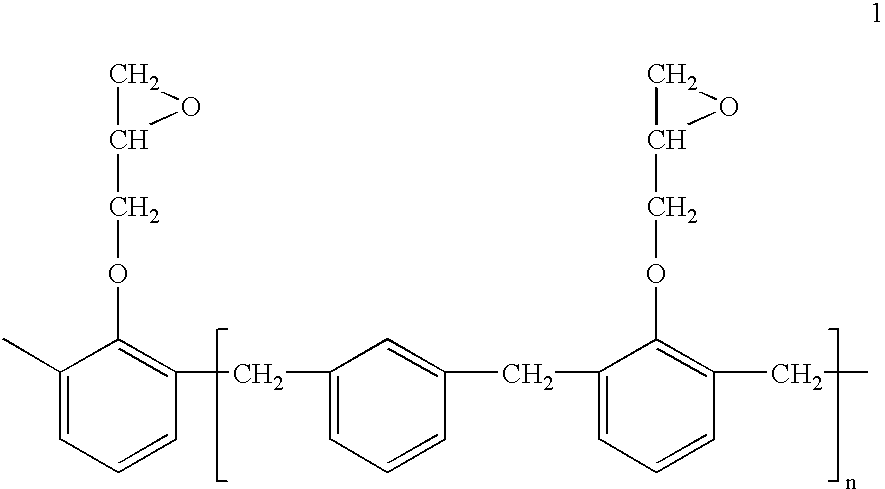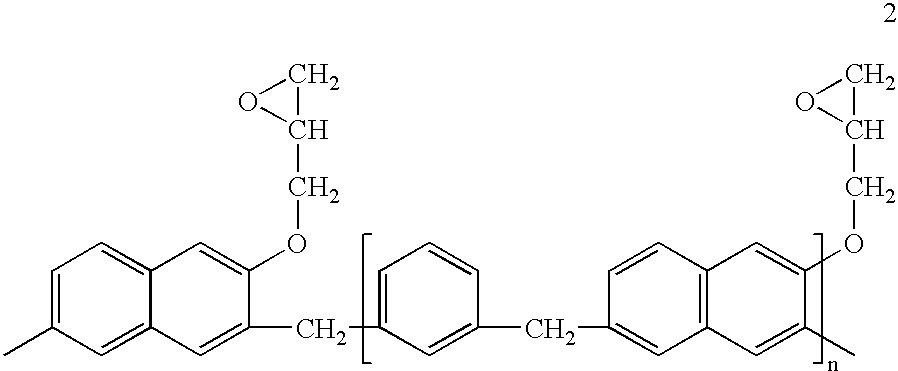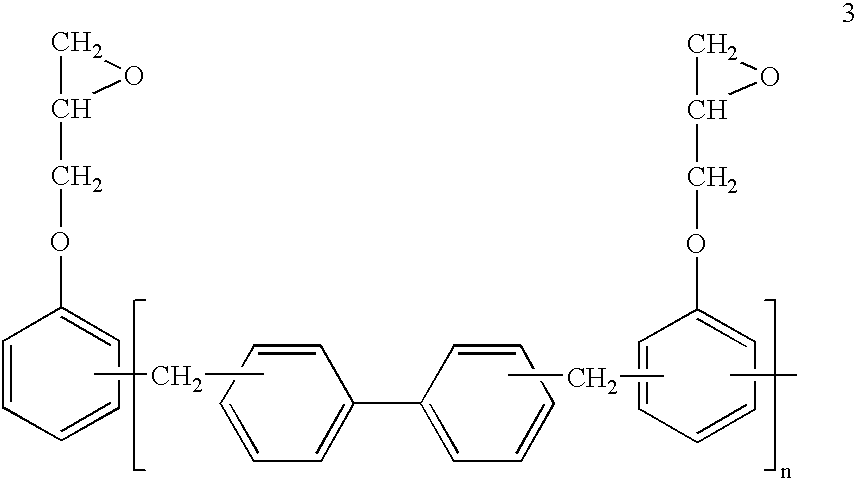Flame-retardant resin composition and prepreg and laminate using the same
a technology of flame retardant resin and composition, which is applied in the direction of synthetic resin layered products, metal layered products, organic compounds of the group 5/15, etc., can solve the problems of adverse effect of innate properties, and achieve the effects of high heat resistance, sufficient flame retardancy, and high heat resistan
- Summary
- Abstract
- Description
- Claims
- Application Information
AI Technical Summary
Benefits of technology
Problems solved by technology
Method used
Image
Examples
example 1
To a mixture of 100 parts by weight of a phenolic novolak epoxy resin (Epiclon N-770 produced by Dai-Nippon Ink and Chemicals, Ltd.), 32 parts by weight of a phenolic aralkyl resin (Milex XLC-LL produced by Mitsui Chemical Co., Ltd.), 31 parts by weight of a triazine-modified phenolic novolak resin (LA-7054 produced by Dai-Nippon Ink and Chemicals, Ltd.) and 21 parts by weight of 9,10-dihydro-9-oxa-10-phosphaphenanthrene-10-oxide (HCA), methl cellosolve was added to prepare a varnish having a nonvolatile concentration of 60% by weight. The varnish had a phosphorus content of 1.7% by weight and a nitrogen content of 2.0% by weight based on the total amount (100% by weight) of the epoxy resin, curing agent and phosphorus compound. This varnish was impregnated in a glass woven fabric (0.18 mm thick, mfd. by Nitto Boseki K K) at a ratio of 80 parts by weight (solid content) to 100 parts by weight of the glass woven fabric, and dried in a 150.degree. C. drying oven for 5 minutes to make ...
PUM
 Login to View More
Login to View More Abstract
Description
Claims
Application Information
 Login to View More
Login to View More - R&D
- Intellectual Property
- Life Sciences
- Materials
- Tech Scout
- Unparalleled Data Quality
- Higher Quality Content
- 60% Fewer Hallucinations
Browse by: Latest US Patents, China's latest patents, Technical Efficacy Thesaurus, Application Domain, Technology Topic, Popular Technical Reports.
© 2025 PatSnap. All rights reserved.Legal|Privacy policy|Modern Slavery Act Transparency Statement|Sitemap|About US| Contact US: help@patsnap.com



